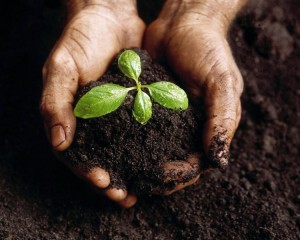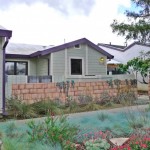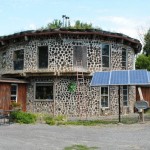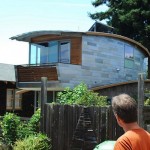 Composting can be either an enjoyable or a dreadful experience, can it not? Personally, being a landscaper I love to play with dirt so to me it’s sort of like playing in sand box – fun!
Composting can be either an enjoyable or a dreadful experience, can it not? Personally, being a landscaper I love to play with dirt so to me it’s sort of like playing in sand box – fun!
Composting is good for the environment and it’s a smart way to put the nutrients back in the ground. It helps to reduce greenhouse gases by sequestering carbon back into the soil; storing the carbon for plants to use. Sequestering is actually considered by the US Environmental Protection Agency as a carbon ‘sink’, because it takes the carbon (C) out of (CO2), and leaves just the oxygen (O2) to float into the atmosphere. EPA has more info on this if you’d like to read more.
In our first month of composting at home, my wife and I reduced our trash waste from three 30 gallon bags all the way to one bag. Wow! We now get excited to see how much we can do to reduce our waste. Our worm bin in the garage and the outdoor stackable bin are also put to use and are doing great.
If you have not tried composting yet then I would like to invite you to consider it. Relax, you really do not need to run out a buy a pound of worms to get started. There are a few simple ways to ease into it.
For example, you can begin by composting leaves. Just the other day, I composted a load of nutritious leaves from a townhome I maintain that otherwise would have been put out on the curb and hauled to the landfill. You can do it too.
You may find yourself reducing your landfill waste just by composting the following items:
- Vegetable and fruit food scraps. Get a small container and place next to where you prepare food, like the kitchen sink. Once the container is full, place the fruit and vegetable scraps into the outdoor compost bin.
- Other ingredients are office paper, cardboard, and junk mail. Set up a paper bin in your house just for this purpose. When the bin is full, put the recyclable, non-toxic paper products into the outdoor compost bin.
- Have your gardener grasscycle the lawn trimmings back onto the lawn. The lawn cuttings will breakdown and provide nutrients to the lawn and soil.
- Have your gardener keep all leaf and shrub debris piled into a compost bin. You can then mix in the food scraps and recyclable paper products.
Just spread the finished compost across the soil like flour on pizza dough. You’ll love the smell the earthy finished compost. It has the following benefits to soil and plants:
- Feeds soil ecology and builds soil structure
- Builds plant health and resistance to pests
- Increases a soils ability to hold and absorb water
- Reduces a landscapes requirement for water
- No need for costly, fossil fuel based chemicals
Many counties and cities have free classes, and once you learn, doing it can be rewarding. Check out the ReduceWaste website of Santa Clara County for schedules and more info. Similar classes are also available in San Mateo as well as Alameda Counties.
I highly recommend committing to composting by taking one of the locally sponsored classes. You’ll meet other fellow compost enthusiasts and have a good time.
 Author: Nate Crosby of Crosby Landscaping.
Author: Nate Crosby of Crosby Landscaping.
Green Gardener certified. Nate is a member of
the CLCA-SFBA chapter and a big enthusiast
of green living and sustainable landscaping.

 Frank Schiavo Solar Home’s Legacy to San Jose
Frank Schiavo Solar Home’s Legacy to San Jose One Man’s Trash…is Another Scrounger’s House (if You Know How to Live)
One Man’s Trash…is Another Scrounger’s House (if You Know How to Live) Berkeley Architects Build a Funky House out of 104 Salvaged Cars
Berkeley Architects Build a Funky House out of 104 Salvaged Cars
Yea! Nate!